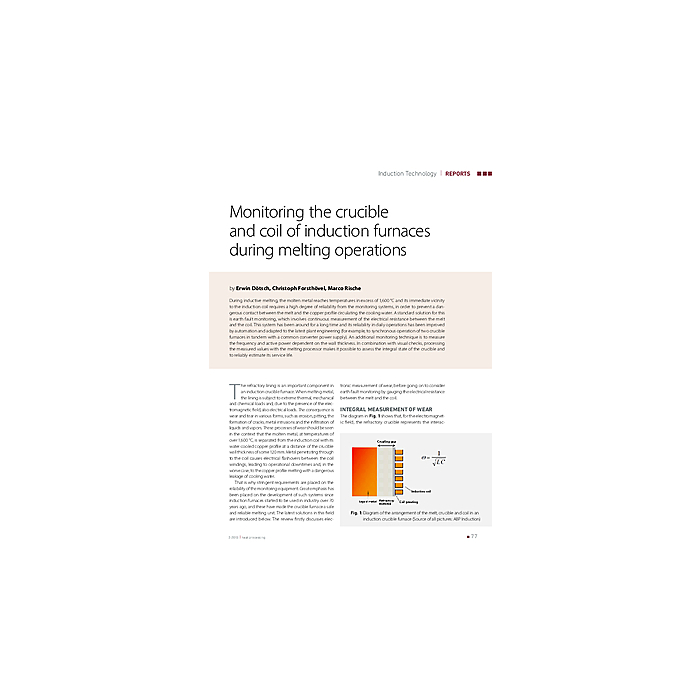Monitoring the crucible and coil of induction furnaces during melting operations
€4.90
In stock
article number
00541_2013_02_04
During inductive melting, the molten metal reaches temperatures in excess of 1,600 °C and its immediate vicinity to the induction coil requires a high degree of reliability from the monitoring systems, in order to prevent a dangerous contact between the melt and the copper profile circulating the cooling water. A standard solution for this is earth fault monitoring, which involves continuous measurement of the electrical resistance between the melt and the coil. This system has been around for a long time and its reliability in daily operations has been improved by automation and adapted to the latest plant engineering (for example, to synchronous operation of two crucible furnaces in tandem with a common converter power supply). An additional monitoring technique is to measure the frequency and active power dependent on the wall thickness. In combination with visual checks, processing the measured values with the melting processor makes it possible to assess the integral state of the crucible and to reliably estimate its service life.
| Authors | Erwin Dötsch/Christoph Forsthövel, Marco Rische |
|---|---|
| Publishing Date | 1 Feb 2013 |
| Format | |
| Zeitschrift | heat processing - Issue 02 2013 |
| Publisher | Vulkan-Verlag GmbH |
| Language | English |
| Pages | 5 |
| Title | Monitoring the crucible and coil of induction furnaces during melting operations |
| Description | During inductive melting, the molten metal reaches temperatures in excess of 1,600 °C and its immediate vicinity to the induction coil requires a high degree of reliability from the monitoring systems, in order to prevent a dangerous contact between the melt and the copper profile circulating the cooling water. A standard solution for this is earth fault monitoring, which involves continuous measurement of the electrical resistance between the melt and the coil. This system has been around for a long time and its reliability in daily operations has been improved by automation and adapted to the latest plant engineering (for example, to synchronous operation of two crucible furnaces in tandem with a common converter power supply). An additional monitoring technique is to measure the frequency and active power dependent on the wall thickness. In combination with visual checks, processing the measured values with the melting processor makes it possible to assess the integral state of the crucible and to reliably estimate its service life. |
Write Your Own Review

